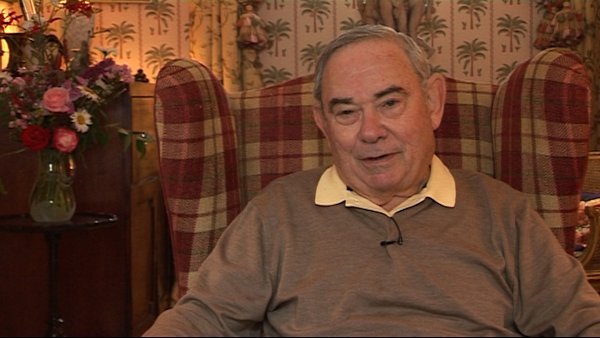NEXT STORY

Trying to understand the fundamental biology of aging
RELATED STORIES

NEXT STORY

Trying to understand the fundamental biology of aging
RELATED STORIES



The suggestion that I made, that the finite lifetime of cultured normal cells have anything to do with aging, of course, was disregarded by most people and thought to be a very foolish suggestion, and indeed it was considered... unacceptable by Peyton Rous, who rejected my original submission.
But as the years went by in the '60s, I became more and more interested in the biology of aging, although I... as I said earlier, and I confess to the fact that I was disinterested in the subject entirely until these early events occurred and the laboratory observation was made. It became even more attractive when colleagues, namely George Martin and Samuel Goldstein, published papers a few years after mine, in which they not only confirmed my work, but George Martin went even further and confirmed the work in my second paper, where I showed that there was a difference in population doubling potential in the cells cultured from older adults compared to those cultured from human embryos, which suggested a relationship between the chronological differences in those two populations. Samuel Goldstein also confirmed this and extended it. George also extended the work to some extent. This was very gratifying. I recall vividly reading George Martin's paper – which was the first one to confirm what I had found – and intellectually breathing a sigh of relief that, well, someone out there has confirmed my work. Of course it's been confirmed thousands of times since, worldwide. There's no doubt about the phenomenon. And also, as years went by, the relationship to chronological age became more and more apparent. I believe I mentioned earlier that the preservation of the cells in liquid nitrogen resulted in my understanding that the cells had a memory, which was quite unusual and led me to the conclusion that the cells had some kind of counting mechanism. They must count the number of population doublings that they undergo when they're cultured in vitro, in glassware or plasticware now.
The second thing that supported this belief was that all of the foetal embryonic tissue that I cultured, from various foetuses, showed the occurrence of their finite lifetime happening between 40 and 60 population doublings, which was rather unusual. Why should they all stop replicating during that narrow window? So I, in fact, even later, named this unknown mechanism of cell memory. I called it a 'replicometer', because it was measuring replications. It was not measuring the passage of time, which some people early on confused, but measuring a number of population doublings. Of course I was in total ignorance of what was to occur about ten years later, which I will explain subsequently.
Leonard Hayflick (b. 1928), the recipient of several research prizes and awards, including the 1991 Sandoz Prize for Gerontological Research, is known for his research in cell biology, virus vaccine development, and mycoplasmology. He also has studied the ageing process for more than thirty years. Hayflick is known for discovering that human cells divide for a limited number of times in vitro (refuting the contention by Alexis Carrel that normal body cells are immortal), which is known as the Hayflick limit, as well as developing the first normal human diploid cell strains for studies on human ageing and for research use throughout the world. He also made the first oral polio vaccine produced in a continuously propogated cell strain - work which contributed to significant virus vaccine development.
Title: Studying the biology of aging
Listeners: Christopher Sykes
Christopher Sykes is a London-based television producer and director who has made a number of documentary films for BBC TV, Channel 4 and PBS.
Tags: George Martin
Duration: 3 minutes, 57 seconds
Date story recorded: July 2011
Date story went live: 08 August 2012